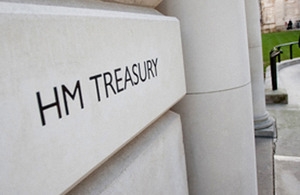
The reversal of April’s 1.25% increase in National Insurance rates for employees and employers took effect from Sunday 6 November.
The cut will leave almost 30 million people £500 better off on average next year, the Treasury said.
That £500 figure also takes into account July’s increase in National Insurance thresholds. National Insurance thresholds were increased in the summer to take 2.2 million lower income people out of paying the tax.
Workers will begin receiving the tax cut in their payslips this month, with all expected to have started receiving it by February.
The cut was announced by the government on 22 September, as part of the reversal of the Health and Social Care Levy.
It was announced by the short-lived Chancellor Kwasi Kwarteng as part of his later largely overturned Mini-Budget.
National Insurance rates had been increased in April by then Chancellor Rishi Sunak to raise more money for the Government.
Former Prime Minister Liz Truss pledged to scrap the increase and it was almost the only measure not scrapped by the current Chancellor Jeremy Hunt when he issued an emergency financial statement in October.
There are different ‘classes’ of National Insurance (NI). The type people pay depends on their employment status and how much they earn.
Employers and employees pay Class 1 NI depending on how much the employee earns.
Employer rates changed as follows from 6 November:
- rate above the secondary threshold (£758 a month) fell from 15.05% to 13.8%
- Class 1A rate on expenses and benefits fell from 15.05% to 14.53%
Employee rates changed as follows from 6 November:
- between the primary threshold (£1,048 a month) and the upper earnings limit (£4,189 a month) the amount employers deduct from employees’ pay fell from 13.25% to 12%
- above the upper earnings limit (£4,189 a month) the amount employers deduct from employees’ pay fell from 3.25% to 2%
- the married women’s reduced rate between the primary threshold (£1,048 a month) and the upper earnings limit (£4,189 a month) fell from 7.1% to 5.85%
- the rate for employees deferring NI fell from 3.25% to 2%
Full details of the updated National Insurance rates and allowances are published by HMRC here.

